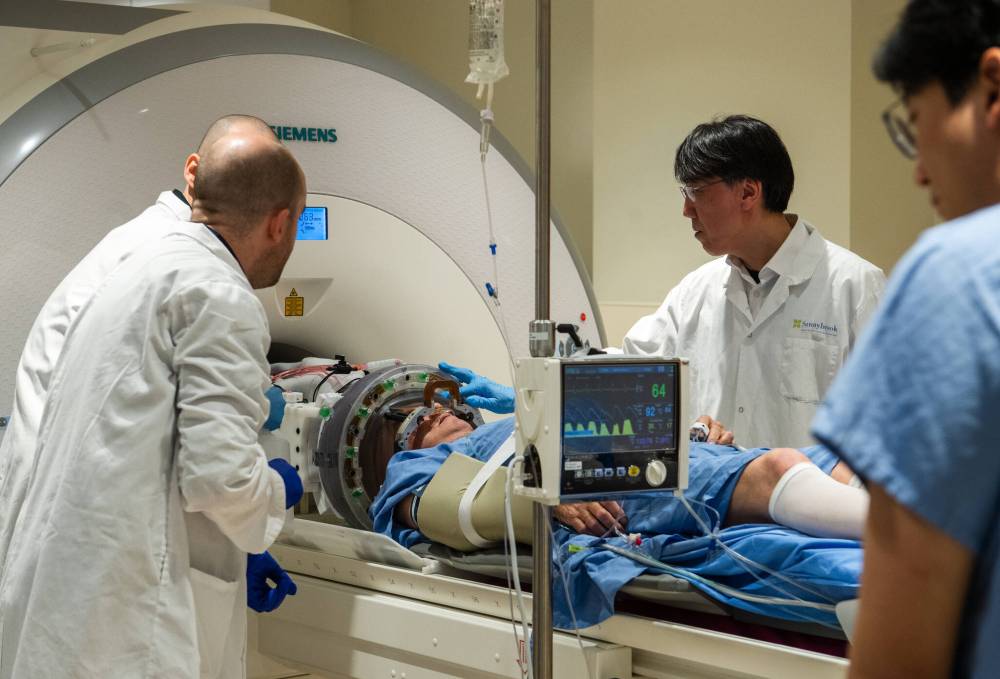Manitobans voted to ‘fix’ health care; it’s quite possibly beyond repair
Advertisement
Read this article for free:
or
Already have an account? Log in here »
To continue reading, please subscribe:
Monthly Digital Subscription
$0 for the first 4 weeks*
- Enjoy unlimited reading on winnipegfreepress.com
- Read the E-Edition, our digital replica newspaper
- Access News Break, our award-winning app
- Play interactive puzzles
*No charge for 4 weeks then price increases to the regular rate of $19.00 plus GST every four weeks. Offer available to new and qualified returning subscribers only. Cancel any time.
Monthly Digital Subscription
$4.75/week*
- Enjoy unlimited reading on winnipegfreepress.com
- Read the E-Edition, our digital replica newspaper
- Access News Break, our award-winning app
- Play interactive puzzles
*Billed as $19 plus GST every four weeks. Cancel any time.
To continue reading, please subscribe:
Add Free Press access to your Brandon Sun subscription for only an additional
$1 for the first 4 weeks*
*Your next subscription payment will increase by $1.00 and you will be charged $16.99 plus GST for four weeks. After four weeks, your payment will increase to $23.99 plus GST every four weeks.
Read unlimited articles for free today:
or
Already have an account? Log in here »
There is a story behind the story of longer waiting times for priority surgical procedures, and Manitobans are not going to like it.
This week, the Canadian Institute for Health Information released its annual snapshot of priority surgical wait times. In Manitoba and across the country, more people are waiting longer to have surgeries to treat cancer, remove cataracts and replace hips and knees.
Politically, this is bad news for provincial governments that are often judged by voters on the ability to provide timely health care. That’s certainly true in Manitoba, where the NDP rode to victory in the 2023 election largely on its bold plan to fix the tattered health-care system.

Since that victory, Premier Wab Kinew and his government have been working to keep that promise. However, as the CIHI report this week showed, the situation is getting worse, not better, despite increased investments.
Although the fact that provinces are falling behind is newsworthy, it is the low-hanging fruit in this story. The really alarming details can only be found by asking why we’re in this predicament.
First, the basic numbers.
CIHI tracks the volume of “priority procedures,” which includes hip and knee replacements, cataract removals and cancer surgeries. In Manitoba, the data shows that median wait times went up in all categories and are now longer than they were in the pre-pandemic era.
This is happening even though the total number of surgeries is, in Manitoba and across the country, increasing.
Between 2019 and 2023, CIHI reported total surgical volume for priority procedures went up by five per cent. However, over the same period, Canada’s population increased by seven per cent, and there has been a 10 per cent increase in surgical demand for people 65 years and older.
Every province in this country is ready, willing and somewhat able to spend more money get more surgeries done. But without the nurses and doctors, it’s a moot point.
In Manitoba, the Kinew government has been rushing out announcements on increased surgical slates, including a pledge to complete up to 800 additional hip and knee replacement surgeries in Selkirk.
The same is true for diagnostic tests. Despite adding nearly 18,000 additional MRIs and 91,000 more CT scans between 2020 and 2024, the median wait time for both diagnostic procedures had gone up.
In terms of the macro demographic forces, we’re losing ground. And the situation becomes worse when you consider two additional factors.
First, our overall health as a nation is much worse now than it was when COVID-19 struck. To avoid a killer virus, patients with chronic health issues stopped going to their doctors, exacerbating existing conditions and promoting new illnesses. So, as we cancelled or delayed procedures, people got sicker and now require much more complex health-care treatment.
The second factor, of course, is the continued shortage of nurses and doctors.
Every province in this country is ready, willing and somewhat able to spend more money get more surgeries done. But without the nurses and doctors, it’s a moot point; you can’t make an insufficient pool of health-care professionals work 24-7 to make up ground.
Today, we’re spending more money to do more procedures, and the situation is getting worse. That is the legacy of provinces that did not meet the needs of a growing and aging population before COVID hit.
The shortage of medical professionals is acute now, but it’s not a problem that you can lay at the feet of any one government. You could go back to the mid-1990s, when the provinces, en masse, trimmed medical and nursing school admissions in a moronic bid to control health-care costs. (Yep, that happened, look it up.)
However, there have been some more recent, equally moronic mistakes made.
When former premier Brian Pallister led the Progressive Conservatives back to power in 2016, he started a systemic starvation of health care that not only ignored the wait-times crisis, but angered most nurses and doctors.
Nurses in particular were enraged at ill-fated plans to reorganize the Winnipeg hospital network and close several emergency rooms. All apparently without an iota of consideration about how nurses would react.
Well, they didn’t like it — and not only did it encourage older nurses to retire, it drove others to the private agency system, where they could choose where and when they wanted to work at a premium cost to the public system.
The reaction by the Tory government to this conversion of forces was underwhelming.
Each year, Pallister and his successor, Heather Stefanson, would pat themselves on the back for a history-making investment in health care. While it was true the budget for health care went up modestly each year to new heights, it wasn’t enough to keep up with inflation or population growth. That made working in health care a much less attractive option.
And then the pandemic hit and the hole got exponentially bigger.
It will be hard to find a better example of how penny-wise-and-pound-foolish management can undermine a crucial public service.
Today, we’re spending more money to do more procedures, and the situation is getting worse. That is the legacy of provinces that did not meet the needs of a growing and aging population before COVID hit.
We now face two possible fates.
We accept the prospect of years and years of increased investment in a bid to catch up from the deficit we’re in now.
Or we accept that we’ve reached the point where there is no catching up.
dan.lett@freepress.mb.ca

Dan Lett is a columnist for the Free Press, providing opinion and commentary on politics in Winnipeg and beyond. Born and raised in Toronto, Dan joined the Free Press in 1986. Read more about Dan.
Dan’s columns are built on facts and reactions, but offer his personal views through arguments and analysis. The Free Press’ editing team reviews Dan’s columns before they are posted online or published in print — part of the our tradition, since 1872, of producing reliable independent journalism. Read more about Free Press’s history and mandate, and learn how our newsroom operates.
Our newsroom depends on a growing audience of readers to power our journalism. If you are not a paid reader, please consider becoming a subscriber.
Our newsroom depends on its audience of readers to power our journalism. Thank you for your support.
History
Updated on Monday, June 16, 2025 8:29 AM CDT: Minor copy editing changes












